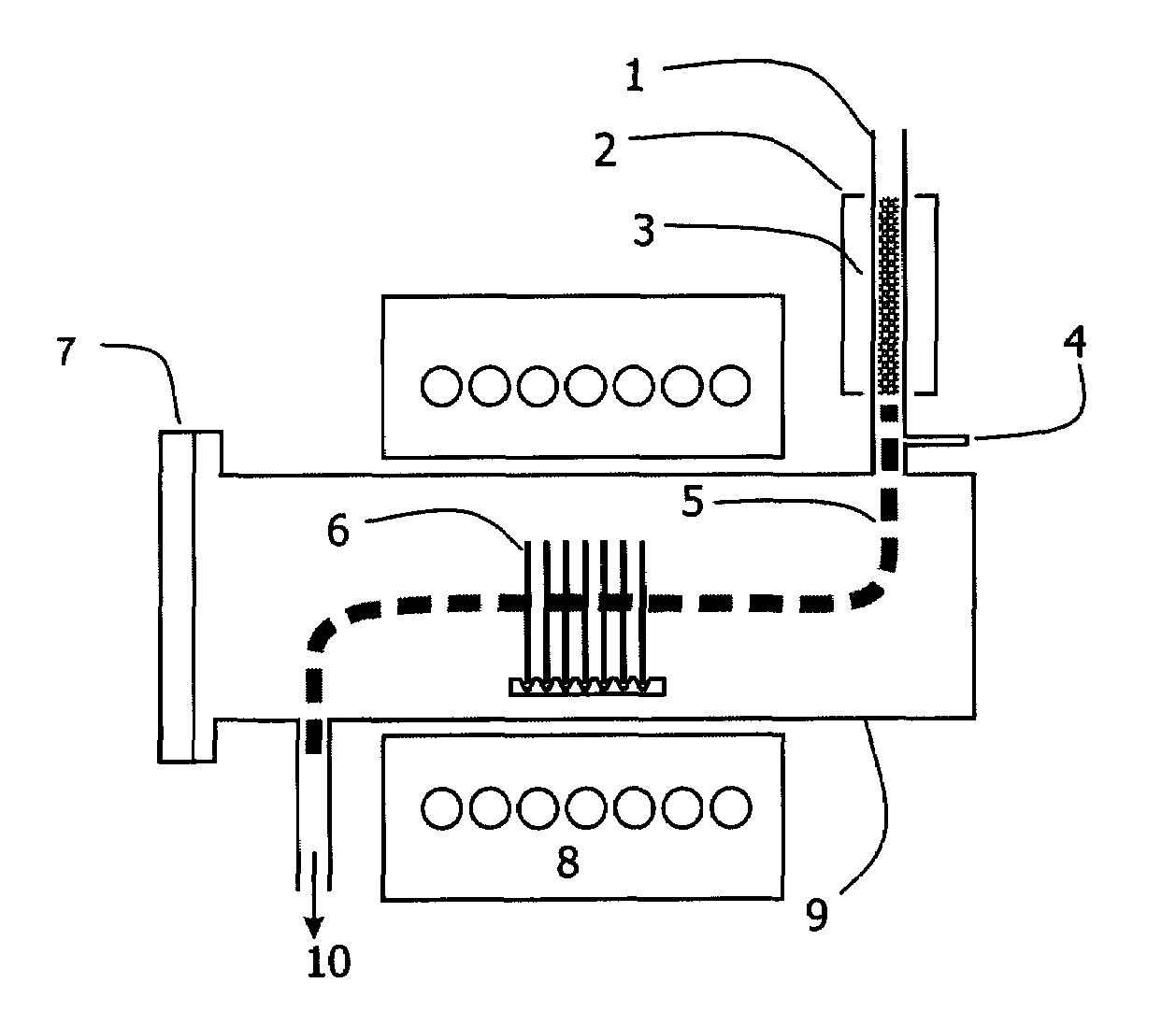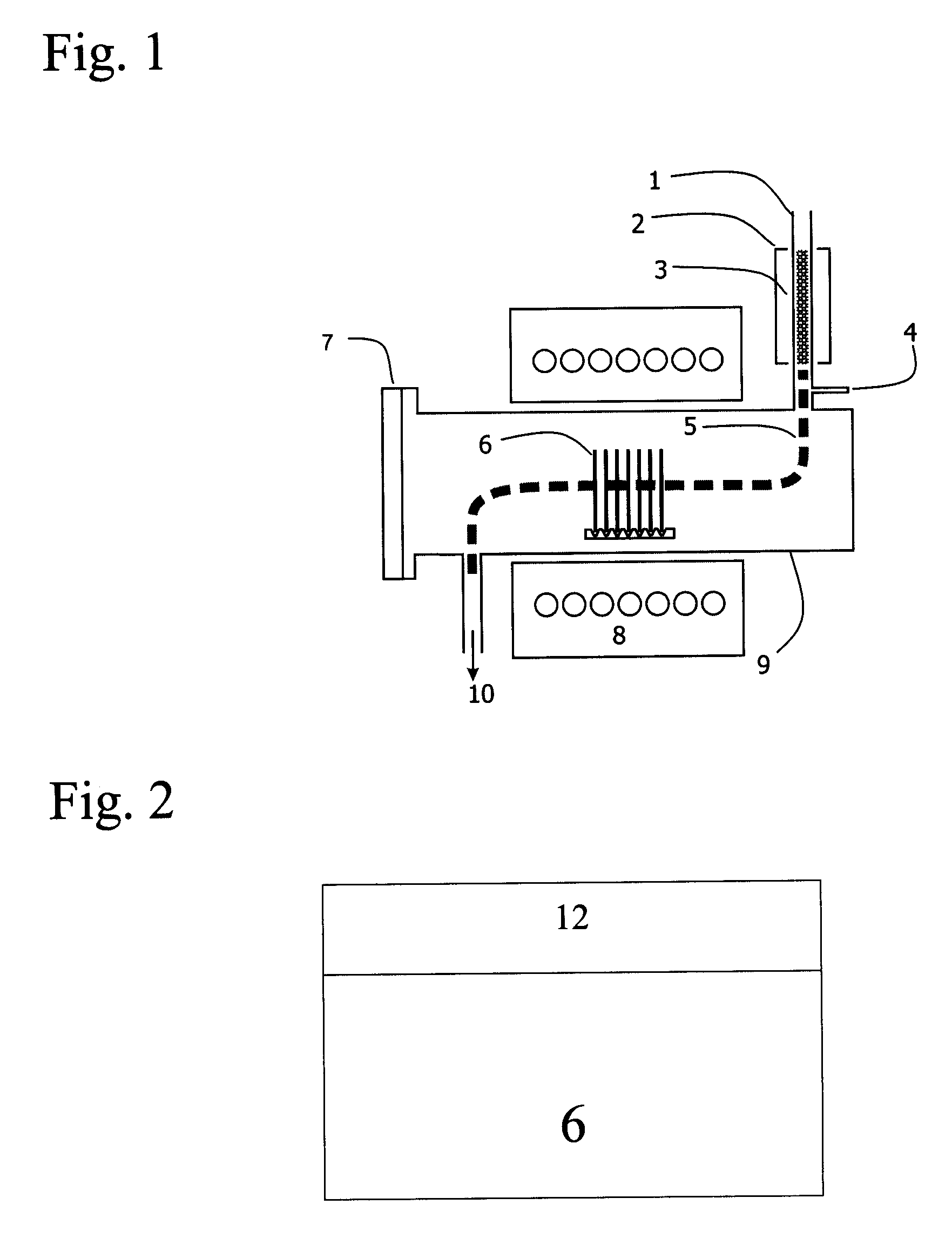Method for making silicon containing dielectric films
a dielectric film and silicon carbide technology, applied in the direction of electrical discharge tubes, semiconductor devices, electrical apparatus, etc., can solve the problems of difficult to effectively form an oxide layer on a sic semiconductor, additional many time-consuming (3–4 hour) wet ambient process, etc., to achieve the effect of effective forming an oxide layer and faster oxidation ra
- Summary
- Abstract
- Description
- Claims
- Application Information
AI Technical Summary
Benefits of technology
Problems solved by technology
Method used
Image
Examples
Embodiment Construction
[0025]Referring now to FIG. 1, it will there be seen that an illustrative embodiment of the invention is depicted in diagrammatic form.
[0026]Silicon carbide substrate 6 is introduced into tube 9 through loading port 7. Furnace 8 encircles tube 9 so that the temperature within tube 9 may be controlled. Pump 10 is in fluid communication with tube 9 so that the pressure within tube 9 may be controlled. An oxidizing gas 1 is passed through an afterglow source such as a microwave cavity 2 so that gas 1 achieves an excited state of energy 3 or plasma phase that upon its exit from said cavity is in a neutral state. Afterglow species 5 then contacts substrate 6 within tube 9 which functions as an afterglow vessel. Furnace 8 maintains tube 9 and hence substrate 6 at a temperature between 600° C. to 1,200° C. and pump 10 maintains said tube at a pressure less than 50 torr.
[0027]More particularly, silicon carbide substrate 6 is supported within fused silica tube 9, or any appropriate vessel su...
PUM
 Login to View More
Login to View More Abstract
Description
Claims
Application Information
 Login to View More
Login to View More - R&D
- Intellectual Property
- Life Sciences
- Materials
- Tech Scout
- Unparalleled Data Quality
- Higher Quality Content
- 60% Fewer Hallucinations
Browse by: Latest US Patents, China's latest patents, Technical Efficacy Thesaurus, Application Domain, Technology Topic, Popular Technical Reports.
© 2025 PatSnap. All rights reserved.Legal|Privacy policy|Modern Slavery Act Transparency Statement|Sitemap|About US| Contact US: help@patsnap.com


